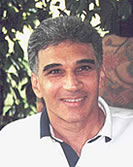A difficult concept to wrap your mind around when learning tennis is that mechanics do not make a shot, the shot makes the mechanics. By "mechanics" I mean the various techniques that are part of a stroke. By "shot" I mean the stroke that results from whatever conditions exist when you reach the ball. Whether you move two feet or run twenty feet to hit a ball, the type of shot you will execute is dictated by the circumstances existing at the moment you arrive to hit that ball. Whether the ball is coming at you high, low, fast or slow, that shot is what will determine the mechanics!
You cannot preplan exact mechanics for all the different shots that exist. The beginner can learn a few basic concepts about how to hit a ball, but then he or she must go out and actually start hitting balls. The mechanics develop from the act of hitting the shot. The shot makes the mechanics! This is why the pros have many different mechanical shots in their repertoire, from long flowing strokes to quick bunts and half swings. They are performing spontaneously from the feel of a particular situation that they have experienced thousands of times.
Right now you may be learning and hitting shots by trying to force mechanics. These same shots the pros learned to hit through instinctive and spontaneous training when hitting balls. Remember, the strokes you are attempting to master were all wrong years back. The two-handed backhand, the open stance forehand, the swinging volley were all developed by pros out of necessity. They used them instinctively to cope with changing conditions like faster speeds, faster courts, better rackets, improved conditioning, and so forth. These shots were not developed by forcing exact techniques. It was the opposite way around! The techniques were developed because the necessity of the shots produced them.
I know this is difficult to understand, especially if you have not yet broken through to a higher level and many of your shots are still wild. You could swear there is a mechanic that will make the shot work right. Well, have you found that mechanic yet? No, I did not think so. That's because the mechanics do not make the shot.
The other day I was coaching one of my students. After she hit a ball late and sent the ball up in the air, she wanted to know what happened. I quickly explained that she hit the ball late, which can often open the racket face and send the ball high. After this hasty explanation, she began to attempt to hit the ball sooner, which brought her shots to a conscious level and made her over-think. Suddenly everything became more difficult. When we sat down I explained that hitting the ball late may cause the racket face to open, but consciously trying to hit the ball sooner is not the solution. I told her that hitting the ball late happens to all players including the pros. What is the solution? The solution is to have such a good feel of the racket face that you can instinctively improvise and still make the shot. The shot you are confronted with determines the mechanics!
You cannot play a match and hope, in the heat of battle, that your opponent always hits to you the ball best suited for your mechanics. You must hit a variety of shots from a variety of positions with a variety of mechanics. This is what the pros are doing, isn't it? Or are you just watching the outcome of their shots and not the mechanics? If you only watch the outcome you will see the same thing almost every time. The ball goes generally where the pro wants it to go! But if you watch the mechanics with an informed eye you will see a myriad of techniques. All are spontaneous for that moment. As the situation arises the pro adapts unconsciously, not consciously.
We are all learning the game backward! For instance, think about when you learned to ride a bicycle. Did the mechanics make you ride or did the act of riding teach you the mechanics? Were you told to hold the handlebars, place your feet on the pedals, sit upright, keep your head straight, stay balanced and, voila, you could ride? Or did you grab onto the handlebars, stick your feet on the pedals and ride and ride and ride until all the training began teaching you the mechanics of riding?
Eventually, you learned to make a more advanced turn on a bicycle. The same principle was true then. To make a turn, you need to lean a certain way, turn the wheel and press the pedal just right. Did someone instruct you to lean 10 degrees to one side and turn the wheel by pushing with one hand and pulling with the other, all while applying the correct pedal pressure? Of course not! You learned by doing. The process taught you the mechanics, the mechanics did not teach you the process. This is important to remember as you learn tennis.
It is safe to say that if the best tennis players in the world had to rely on mechanics to develop their games, they would never have reached the exceptional level of differentiation or artistic ability they have attained. Their unique games were revealed precisely because they were not consciously created.


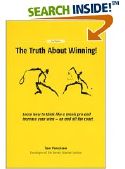

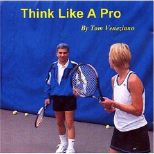
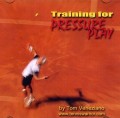



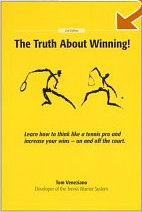
 You will join 13,000 other subscribers in receiving news of updates to the Tennis Server along with monthly tennis tips from tennis pro Tom Veneziano.
You will join 13,000 other subscribers in receiving news of updates to the Tennis Server along with monthly tennis tips from tennis pro Tom Veneziano. 